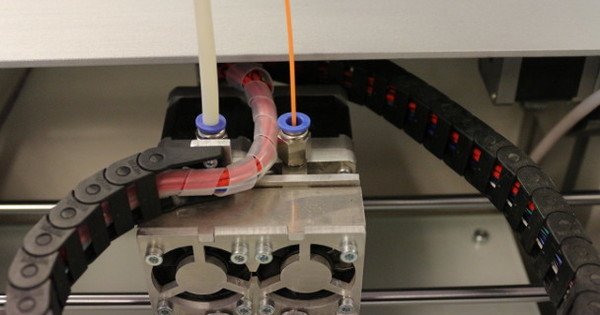Good maps are indispensable for the avid walker and cyclist who likes to travel beautiful routes. This card material now fits easily on your phone. Then it is handy if you can also create your own routes, after which you put them on the device. Phone at hand? Just walk and cycle!
Tip 01: Google Maps
Fancy a lovely walk or bike ride? Nowadays you can easily create your own walking or cycling route in Google Maps on your computer. To do this, log in with your Google account on the website //maps.google.nl. At the top right of the browser screen, click login and enter your user details. Or select a Google account here if you've been logged in before. Then click on the menu icon at the top left. Those are three horizontal lines on top of each other. Choose the option My places and go to the tab Cards. On this tab you will soon see all the maps you create, i.e. your own walking and cycling routes. To create the first route, click at the bottom of the tab on Create map.

Tip 02: Cycling or walking
To plot a route, first look for the starting point via the search box at the top of the screen or by looking for the correct map part with the mouse. Then click below the search box Draw a line and choose Add cycling route or Add walking route. That choice is important, because Google Maps knows which roads and paths your route may use. Now it's a matter of drawing in your favorite route. This can be done in two ways. Do you first click on the start point and then twice on the end point? Then Google Maps automatically chooses a fast and efficient route. Do you have a more beautiful route in mind? Then you can designate some waypoints to lead the route along them. In the next tip we show you how to do that. Even if your route returns to the starting point, you will have to use waypoints. Otherwise, Google Maps will think you're already at your destination.

Tip 03: Click it together
To steer the route in the right direction, first put the starting point on the map again. Then gradually move the mouse in the desired direction. Google Maps again automatically draws an efficient route on roads and paths. Therefore, do not immediately go to the end point, but to a place where you would like to pass. Click there once to place a waypoint. In doing so, you gradually walk down the desired route to the final destination. Once there, click twice to close the route. The route you have plotted will be added to the frame on the left of the screen. Are there few moments of choice until the final destination? Then you only need a few intermediate points. If there are many roads and junctions, you will have to place more waypoints. Want to quickly traverse a boring stretch? Then you can let Google Maps determine the shortest route itself.

Tip 04: Interesting points
Are there any fun or special sights along the way, is there a restaurant where you would like to make a stopover, or do you want to spend the night at your favorite address during a longer trip? Then you can already place a marker there, so that you don't accidentally walk or cycle past it and have to go all the way back. Make in the box left first Unnamed layer active by clicking anywhere in its white. A blue bar will appear in front of it. Then click the icon below the search bar Add marker and click on the map where you want to have a marker. Choose an illuminating name, enter an explanation for this marking if necessary and click on Save. All markings come together neatly in the frame.
 If you have a more beautiful route in mind, point to waypoints
If you have a more beautiful route in mind, point to waypoints Tip 05: Right through it
Are you going to an area where you can roam freely or with paths that are not on the map? Then it makes no sense to let Google Maps follow the paths neatly, if there are any. In that case, choose below the search box for Draw a line and choose Add line or shape. If you now click on the map to indicate points, only straight lines are drawn between them. Whether there is a road or not, Google Maps doesn't care. Click once for the start point and for each waypoint, double click again on the last point. If there are no roads, the default map usually shows too few landmarks. Activate in the frame on the left temporarily Satellite instead of Basemap. Then you can see a lot better how you want to walk or cycle.

Tip 06: Map layers
What you create in Google Maps are map layers with which you add extra information. Those layers are then shown on top of the default map. In the box on the left of the screen you can see all the layers you have created. For example, the markings for points of interest that you encounter along the way, but also the route that you map out. You can rename layers by clicking on them, so that you know what you mean by them later. Not only can you change the name of markers, you can also give them a handy color and provide them with an appropriate icon. This way you can immediately see whether it is, for example, a restaurant, overnight address or photo hotspot.

Tip 07: My cards
Route ready? Click on the left in the frame Nameless card to give your route a clear title and description. Everything is saved automatically. So as soon as you go back to the maps tab in Google Maps (see tip 1), your self-made map is now also visible there. Click on it and you will see the route as an extra layer on top of the standard map. Now you probably won't want to walk or cycle this route with a laptop in hand. Of course you don't have to, because Google Maps also runs on your smartphone (and tablet). So start the app there, tap in the menu (three horizontal lines) My places and scroll to the Maps tab in the header. You will immediately see all your self-made walking and cycling routes and you can start a tour. Make sure you are logged in with the same Google account in the app.

